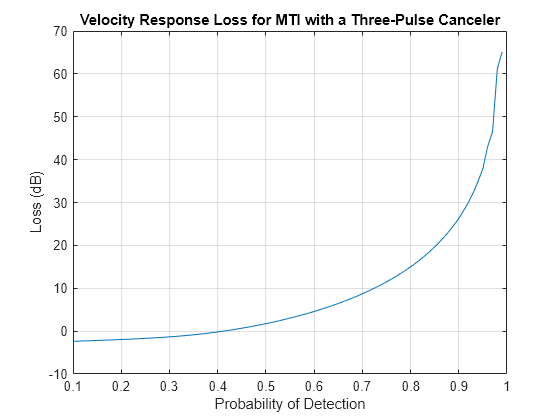mtiloss
Syntax
Description
[
computes integration loss, LI,LV] = mtiloss(PD,PFA,N)LI, and velocity response loss,
LV, due to MTI processing with a two-pulse (first-order) canceller
given the probability of detection, PD, probability of false alarm,
PFA, and the number of received pulses available at the MTI input,
N.
The function computes the loss assuming you are using a square-law detector and a nonfluctuating target.
[
computes MTI losses using one or more name-value arguments. For example, LI,LV] = mtiloss(___,Name,Value)[LI,LV] =
mtiloss(0.64,1e-12,8,'Method','Batch') calculates LI and
LV for MTI with batch processing. Specify the name-value arguments
after any of the input arguments from the previous syntax.
Examples
Input Arguments
Name-Value Arguments
Output Arguments
Version History
Introduced in R2021a
